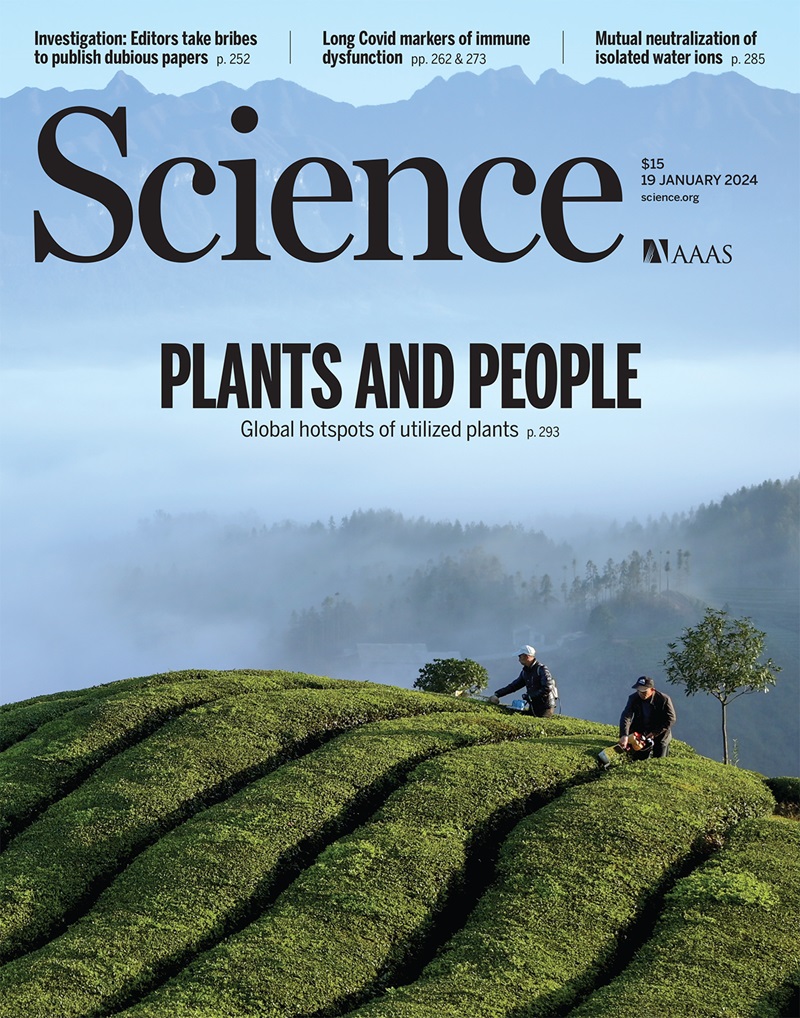Collisions in the sky
IF 44.7
1区 综合性期刊
Q1 MULTIDISCIPLINARY SCIENCES
引用次数: 0
Abstract
Over the past six decades, astronomy, space science, and the space industry have seemed to be in a kind of virtuous symbiosis. Astronomy has benefited from improvements in technology and has had the opportunity to place observing platforms in space. The space industry has been pushed by the extreme technological demands of curiosity-driven research, and benefited from the flow of public money to industrial contracts to build astronomical missions. Both science and industry have been driven by a shared romantic vision of exploring the Universe, whether by studying distant galaxies or by humanity stepping out into space. All of this was suddenly disrupted in 2019 by a rude awakening. Starlink communication satellites began to photo-bomb astronomers’ images as they streaked across the sky. Suddenly, it seemed, astronomy and commercial space activity were in conflict. This friction may be coming to a crunch as the Vera C. Rubin Observatory begins a 10-year survey of the cosmos.天空中的碰撞
在过去的60年里,天文学、太空科学和太空工业似乎处于一种良性的共生关系中。天文学得益于技术的进步,并有机会在太空中放置观测平台。太空工业一直受到好奇心驱动的研究的极端技术需求的推动,并受益于公共资金流向工业合同,以建立天文任务。无论是通过研究遥远的星系,还是人类进入太空,探索宇宙的共同浪漫愿景一直推动着科学和工业的发展。所有这一切都在2019年突然被一个粗鲁的觉醒打乱了。当星链通信卫星在天空中划过时,它们开始轰炸天文学家的图像。突然之间,天文学和商业太空活动似乎发生了冲突。随着维拉·c·鲁宾天文台(Vera C. Rubin Observatory)开始对宇宙进行为期10年的调查,这种摩擦可能会达到关键时刻。
本文章由计算机程序翻译,如有差异,请以英文原文为准。
求助全文
约1分钟内获得全文
求助全文
来源期刊

Science
综合性期刊-综合性期刊
CiteScore
61.10
自引率
0.90%
发文量
0
审稿时长
2.1 months
期刊介绍:
Science is a leading outlet for scientific news, commentary, and cutting-edge research. Through its print and online incarnations, Science reaches an estimated worldwide readership of more than one million. Science’s authorship is global too, and its articles consistently rank among the world's most cited research.
Science serves as a forum for discussion of important issues related to the advancement of science by publishing material on which a consensus has been reached as well as including the presentation of minority or conflicting points of view. Accordingly, all articles published in Science—including editorials, news and comment, and book reviews—are signed and reflect the individual views of the authors and not official points of view adopted by AAAS or the institutions with which the authors are affiliated.
Science seeks to publish those papers that are most influential in their fields or across fields and that will significantly advance scientific understanding. Selected papers should present novel and broadly important data, syntheses, or concepts. They should merit recognition by the wider scientific community and general public provided by publication in Science, beyond that provided by specialty journals. Science welcomes submissions from all fields of science and from any source. The editors are committed to the prompt evaluation and publication of submitted papers while upholding high standards that support reproducibility of published research. Science is published weekly; selected papers are published online ahead of print.
 求助内容:
求助内容: 应助结果提醒方式:
应助结果提醒方式:


